Were you looking to enhance your kitesurfing performance? It’s not just about the wind and the waves — your fitness level is pivotal to kiteboarding success. This article dives into the critical aspects of kitesurfing fitness: robust core conditioning, leg strength for powerful movements, impeccable balance for handling the board, and endurance to keep you cutting through the water for longer.
Whether you’re a beginner curious about the best exercises, seeking to prevent injuries, or considering tailored training programs, we’ve got the insights to boost your kitesurfing fitness. Let’s get started!
Key Takeaways
- Core conditioning exercises like plank variations, dynamic abdominal workouts, and stability ball routines enhance balance and stability for better kiteboarding performance.
- Developing leg strength and power through squats, lunges, plyometric exercises, and balance training is fundamental for efficient movement and maneuvering on the water.
- Comprehensive kiteboarding fitness includes building upper body strength, improving cardiovascular endurance with exercises like HIIT and swimming, adopting recovery strategies like post-kitesurf stretching and myofascial release, and utilizing tailored training programs and technology for personalized performance enhancement.
Core Conditioning for Kitesurfers

At the heart of kitesurfing is your core – the central power station of your body. A robust core enhances stability and balance on the board, enabling better performance and maneuverability. It contributes to your kiteboarding prowess, but additionally, improving core strength through exercises supports better posture and reduces the risk of back pain.
Here are some exercises to bolster your core strength and work on your abdominal muscles.
Plank Variations
Planks are a core-strengthening powerhouse. They engage your core: abs, obliques, and lower back – essential for maintaining balance and preventing injuries while kitesurfing.
Plank variations such as side planks, reverse planks, and walking side planks provide a more intense workout, challenging your stability, mobility, and endurance.
Dynamic Abdominal Workouts
While core stability is critical, kitesurfing also requires dynamic movements. Enter dynamic abdominal workouts. Exercises such as Russian twists and resistance band woodchops target the rotational movement abilities of your core, significantly aiding your maneuverability on the water.
Pair these with plank jumps to introduce a cardio element, enhancing your overall core strength.
Stability Ball Routines
Incorporate stability ball routines into your workout to simulate the unstable conditions of kitesurfing and further engage your core. Exercises such as ball pikes and knee tucks challenge your core strength and stability, essential for maintaining balance and control during kitesurfing sessions.
Leg Strength and Power Drills
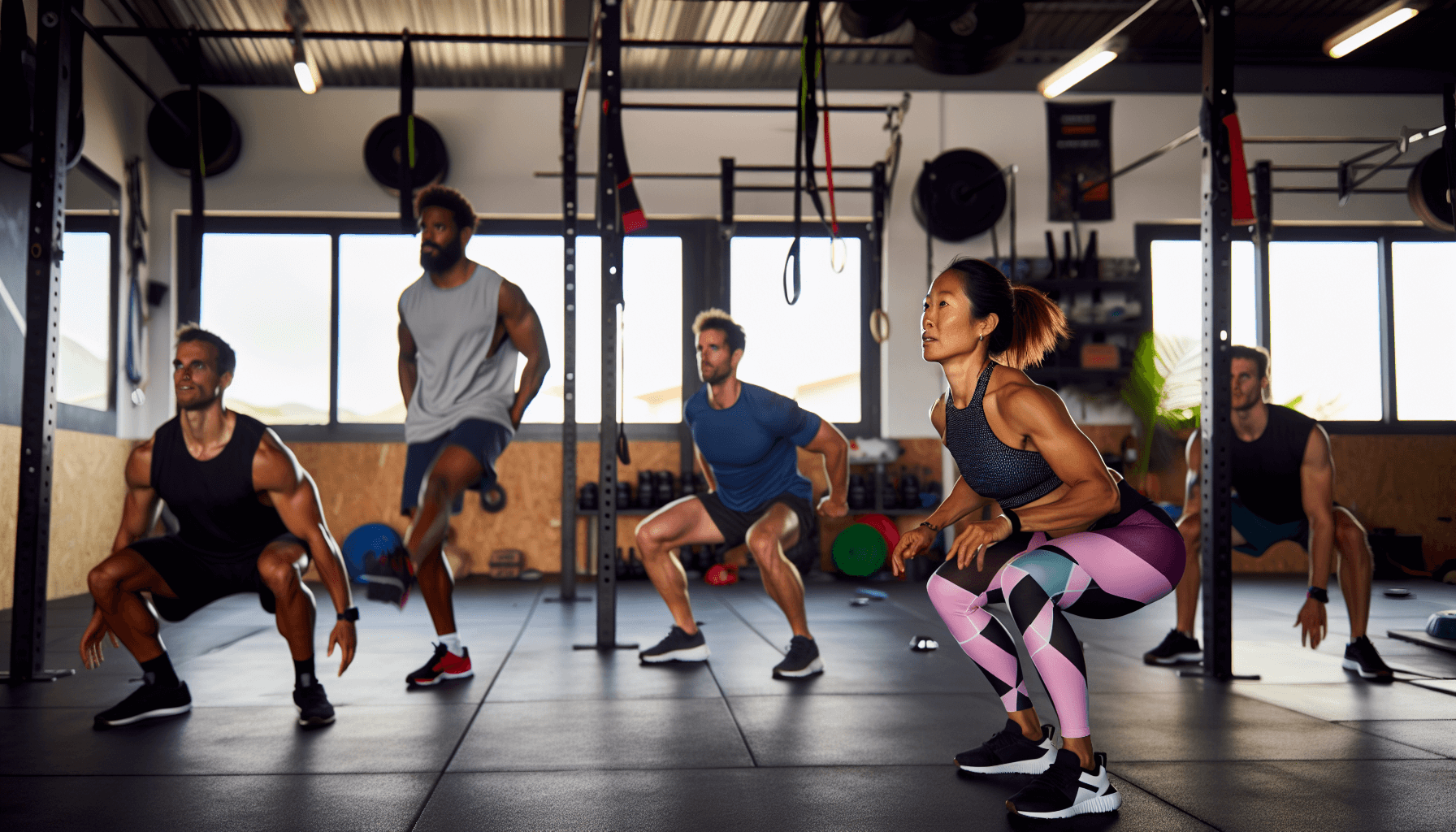
While your core keeps you stable, your hips and legs power your movements on the board. Strong leg muscles are paramount for smooth riding through choppy waters and preparing for jumps.
We will explore potent exercises for enhancing leg and hip strength, mirroring the dynamism of the sport, and incorporating strength training.
Squats and Lunges
Squats and lunges are ground zero for lower body strength. These fundamental exercises target the quads, glutes, hamstrings, ankles, and muscle groups essential for efficient water starts and the ability to perform jumps while kitesurfing.
Adding a plyometric component by transitioning into jumping lunges can significantly improve your leg power and balance.
Plyometric Exercises
Plyometric exercises are your best bet to take your leg power up a notch. Box jumps and burpees are critical for enhancing jump height and leg power, essential for performing jumps and quick movements in kitesurfing.
These exercises help develop essential lower body muscles, providing the explosivity needed for powering up for jumps.
Balance and Coordination Training
Balancing on a board while maneuvering a kite demands impeccable balance and coordination. Exercises like Romanian deadlifts and single-leg squats can help improve proprioception and stability, which is essential for kiteboarding.
Incorporating workouts on unstable surfaces like a Bosu ball can enhance your balance and coordination skills.
Upper Body and Arm Resilience
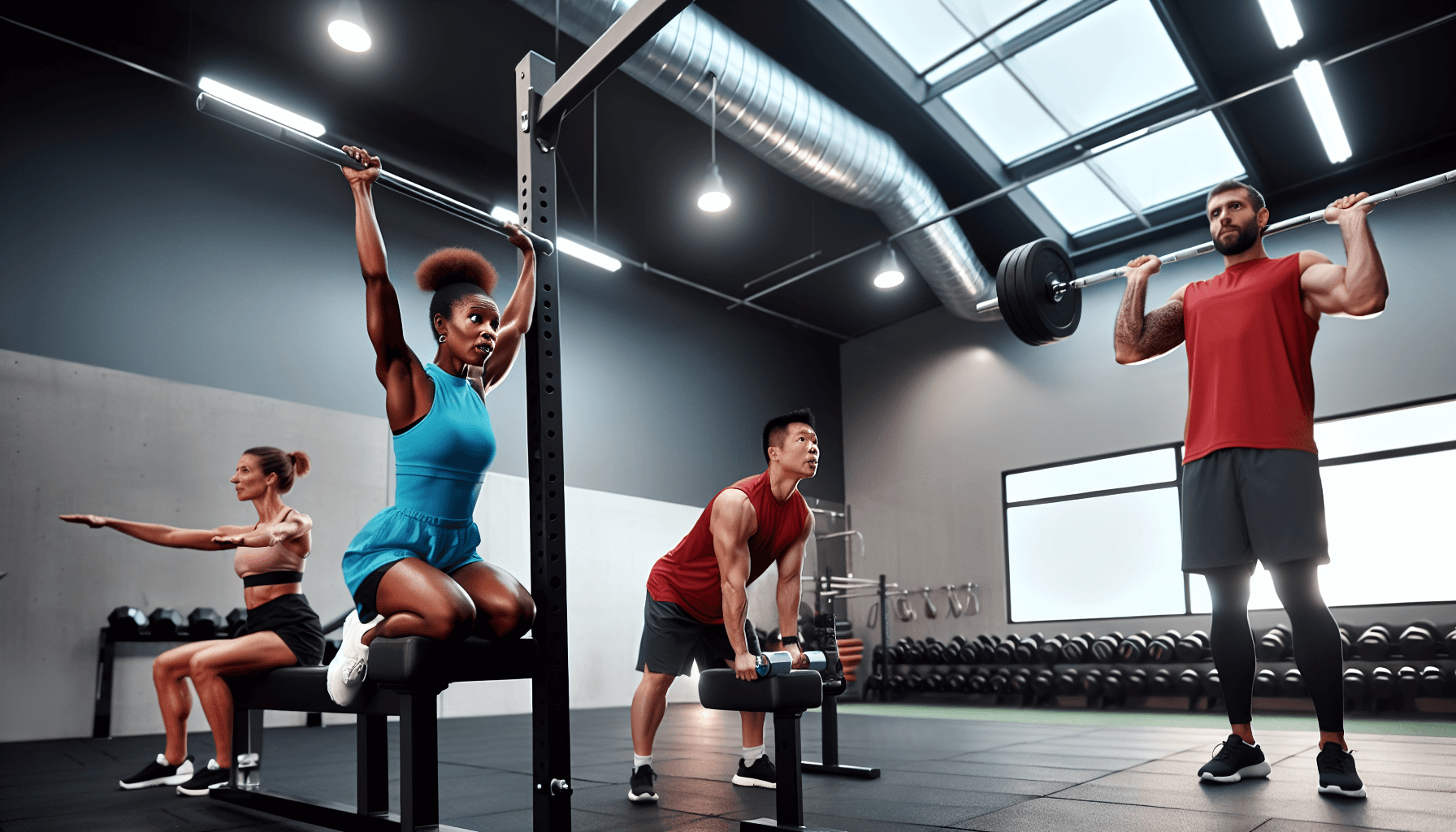
While lower body and core strength are integral to kitesurfing, let’s not forget the essential role of upper body and arm resilience. A solid upper body aids in performing aerial maneuvers and maintaining a firm grip on the control bar.
We will review some exercises that can amplify your upper body and arm resilience, focusing on keeping your arms straight during the movements.
Pulling Movements
Pulling movements like rows is vital for developing your upper body strength and improving posture, which is crucial for maintaining control over the kite. They target upper back muscles like the lats, rhomboids, and traps, all essential for managing the kite’s pull during kitesurfing.
Pushing Patterns
Pushing exercises complement pulling movements, fortifying your upper body strength. Exercises like push-ups build strength in the chest, shoulders, and triceps. These muscles are vital for pushing against the kite bar or controlling the wing in flight.
Stretch and Flexibility
Flexibility is as important as strength for kitesurfers. Stretching exercises can enhance shoulder flexibility and range of motion, benefiting kitesurfing trick execution and reducing injury risk.
Activities like yoga or dynamic stretching routines can further enhance your overall flexibility.
Cardiovascular Endurance for Long Sessions
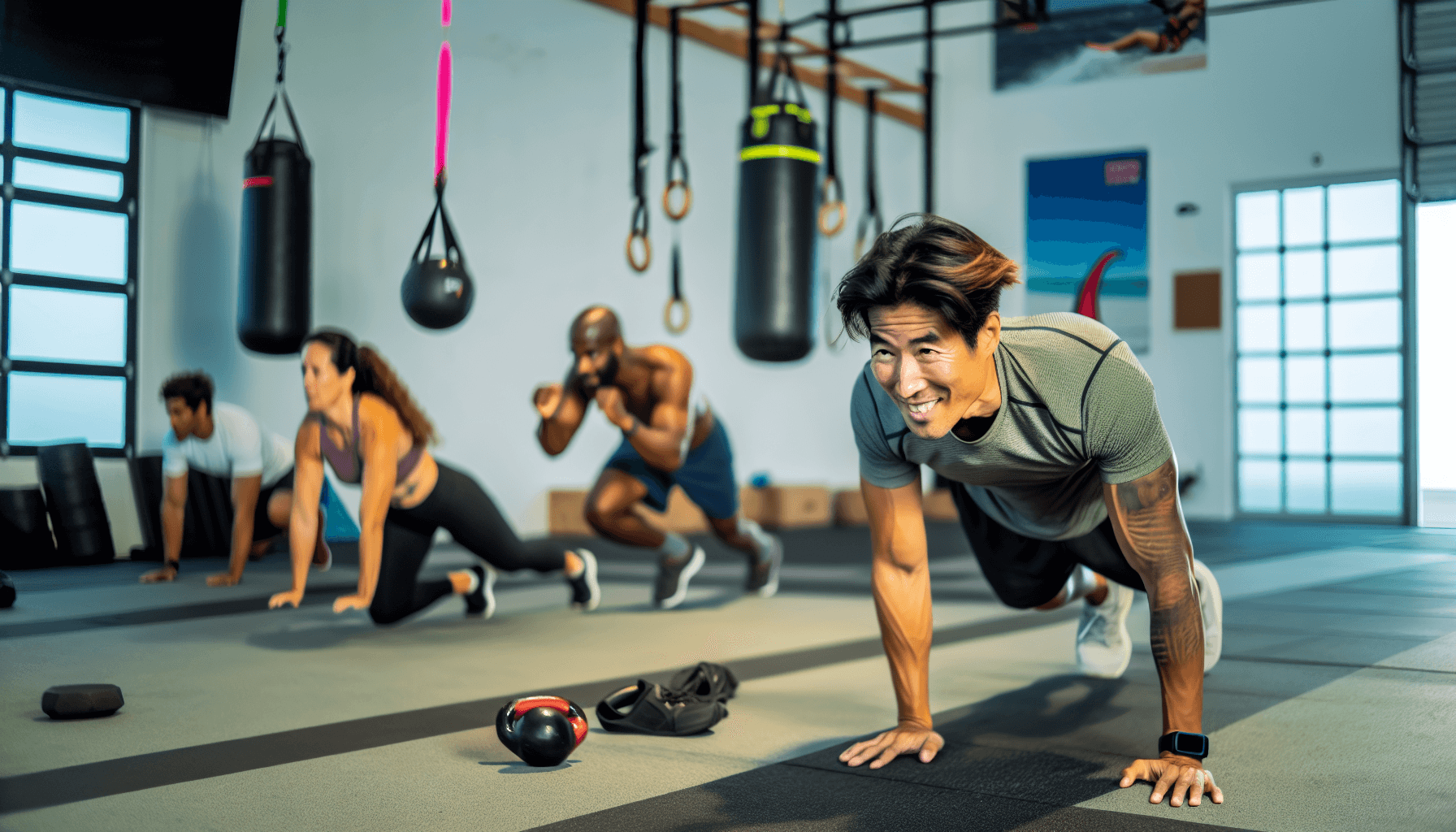
Cardiovascular endurance is the engine that keeps you going during long kiteboarding sessions. Building cardiovascular fitness allows you to endure longer sessions and avoid dangerous mistakes.
Here are some exercises to increase your heart rate and boost your exercise endurance.
High-Intensity Interval Training (HIIT)
High-Intensity Interval Training (HIIT) is a fantastic way to boost your endurance and heart rate. Exercises like plank jacks and cardio boxing workouts provide an intense workout tailored to the physical demands of kiteboarding.
HIIT routines can significantly boost your endurance, which is ideal for the demands of long kiteboarding practice sessions.
Endurance Swimming
Swimming is a superb full-body workout that enhances physical fitness and helps in weight management, as it increases stamina and simulates resistance similar to that encountered during kitesurfing.
Swimming sessions lasting at least two hours and 40 minutes can significantly improve your endurance, preparing you for the demands of kiteboarding.
Fun Cross-Training Activities
Cross-training activities like running and cycling build cardiovascular fitness and strengthen the leg muscles vital for kiteboarding. These fun activities can be a great way to switch up your routine and keep your workouts engaging.
Recovery and Injury Prevention Strategies
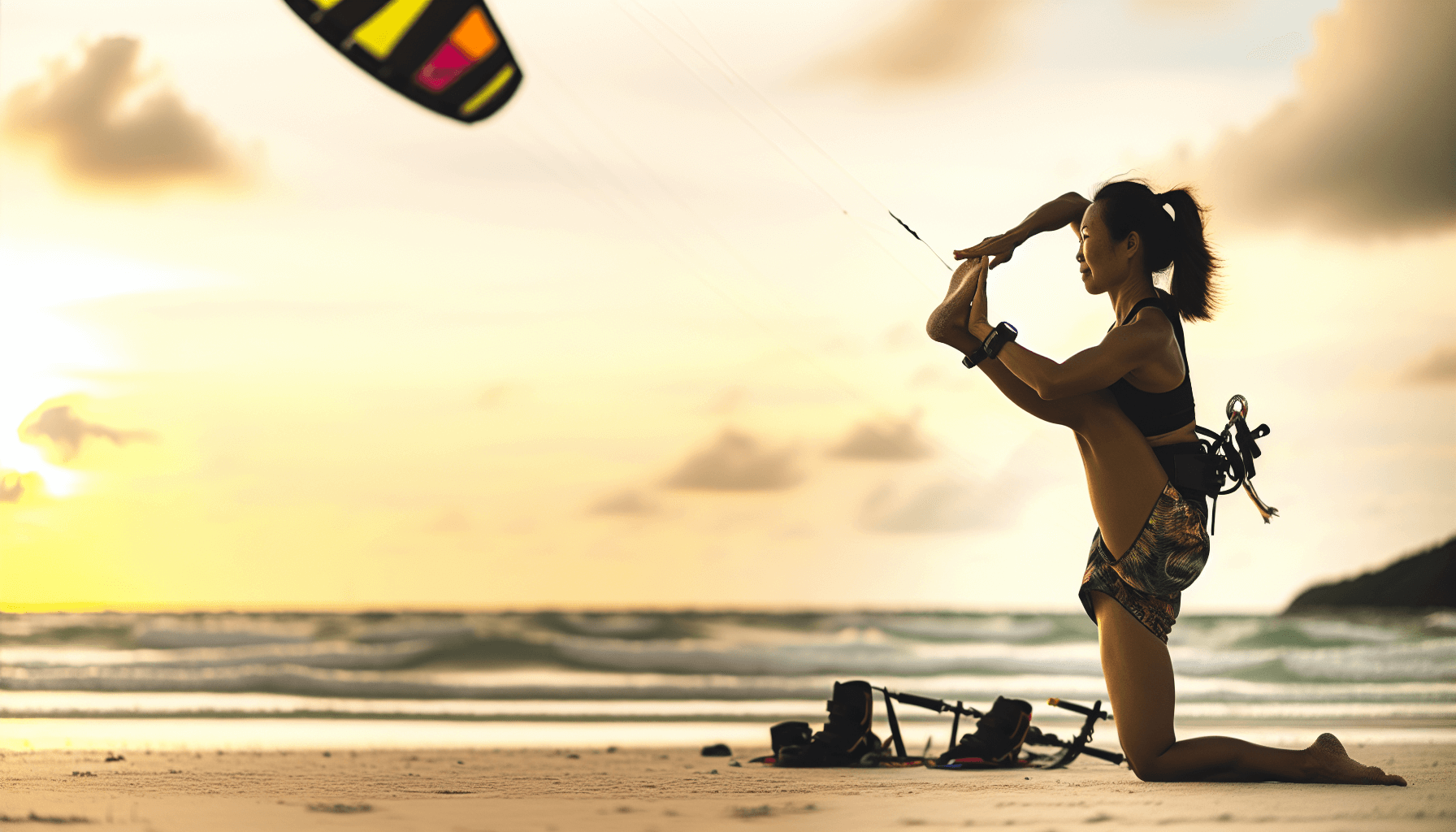
While training is crucial, recovery and injury prevention are equally important for kitesurfers. Proper recovery strategies and equipment can prevent the exhaustion of essential muscle groups and spinal complications associated with kiteboarding.
We will investigate some strategies to boost your recovery and avoid injuries.
Post-Kitesurf Stretching
Post-kitesurf stretching helps reduce muscle soreness and maintain flexibility. Spending at least 5-10 minutes on stretching after kitesurfing can significantly aid your recovery and prepare your body for the next session.
Myofascial Release Techniques
Myofascial release techniques like foam rolling can help correct muscle imbalances, promote relaxation, and improve joint range of motion. These techniques can also alleviate lower back pain, enhancing your recovery and helping you get back on the board quicker.
Rest and Nutrition Tips
Never underestimate the power of rest and good nutrition. Quality sleep and a balanced diet are essential for optimal muscle repair, growth, and kitesurfing performance. Incorporating rest days into your training schedule and maintaining a balanced diet can significantly enhance your sports performance and longevity.
Tailored Training Programs for Kitesurfers
Tailored training programs can work wonders for your kiteboarding performance. These programs cater to your unique requirements, enhancing your sports performance.
Here are some alternatives that could refine and extend your kitesurfing performance by learning new tricks, including wing foiling.
Custom Workout Plans
Custom workout plans can be a game-changer for improving your kiteboarding performance. These plans are tailored to your needs, enhancing balance and coordination, vital for executing jumps and complex moves.
Virtual Coaching and Apps
In our digital age, technology can be a great ally. Virtual coaching and apps like Surfer provide detailed tracking of your sessions, jump heights, speed, distance, and other metrics. These digital tools can help track your performance and guide your progress.
Local Fitness Retreats and Camps
If you’re looking for a more immersive experience, local fitness retreats and camps offer comprehensive, hands-on kiteboarding instruction in a supportive community environment. These retreats provide a unique blend of travel and kiteboarding instruction, allowing you to learn and progress in the sport while enjoying a memorable travel experience.
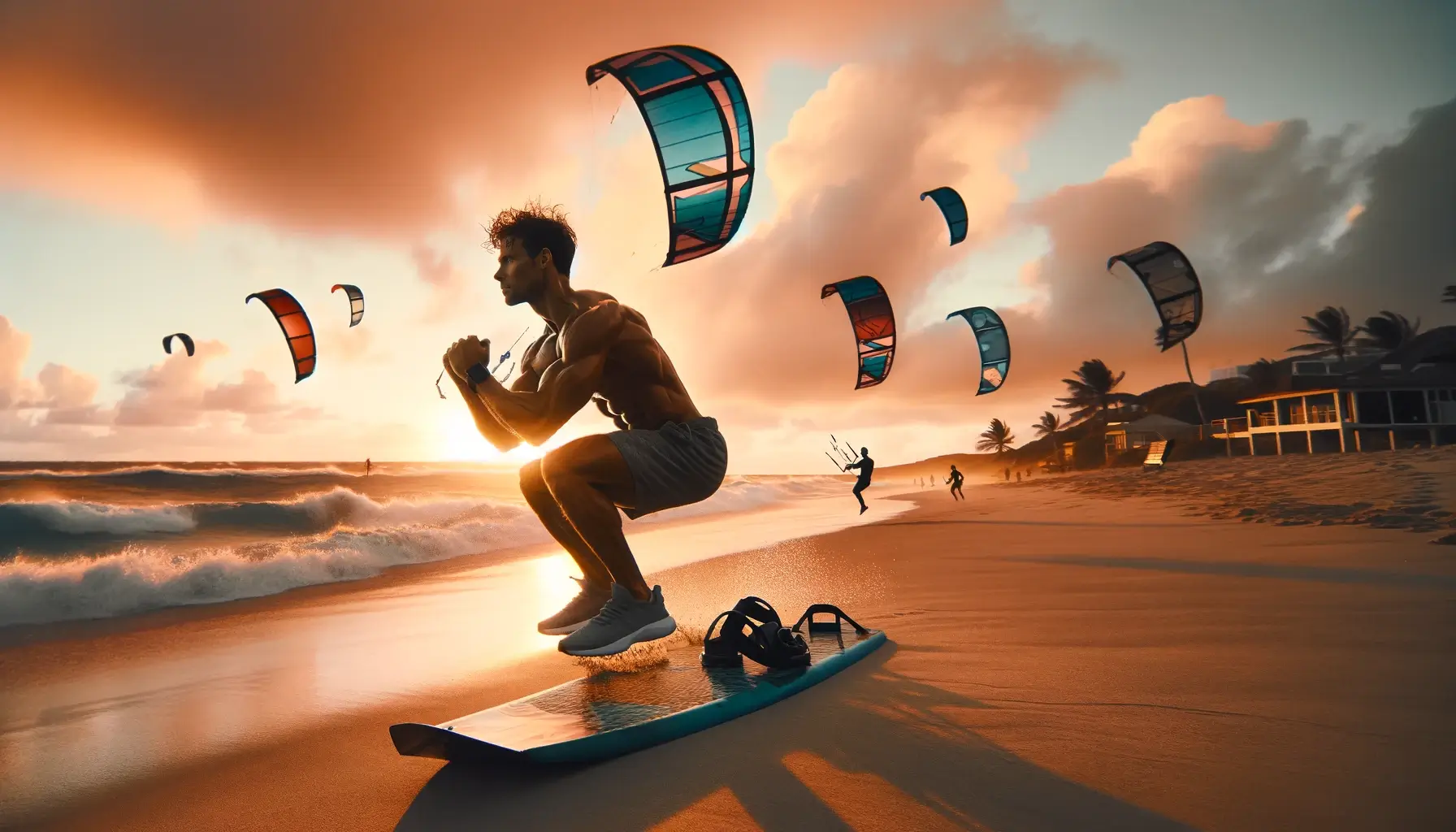
Summary
In kitesurfing, physical fitness is not just about looking good; it’s about performing at your best. Every aspect of your fitness contributes to your kiteboarding prowess, from building a robust core to developing leg power, enhancing upper body resilience, boosting cardiovascular endurance, and prioritizing recovery.
So, are you ready to harness the wind and ride the waves like never before?
Frequently Asked Questions
Does kitesurfing get you fit?
Yes, kiteboarding can provide an intense workout that taxes your core stability, upper body strength, and aerobic fitness. Still, it may require sufficient wind and a more athletic approach to maximize its muscle and cardio benefits.
How fit do you need to be to kitesurf?
While you don’t need to be in top athletic shape to start kitesurfing, a decent physical fitness and core stability baseline will significantly enhance your ability to balance and endure on the water. Improved fitness levels accelerate your learning curve and play a crucial role in minimizing injury risks.
Is kite surfing hard on the body?
Kiteboarding and surfing can be hard on the body, particularly the back, due to strain from choppy water and unfamiliar postures. It’s essential to be aware of the potential impact on your body before taking up the sport.
How can I improve my leg power for kiteboarding?
To improve your leg power for kiteboarding, focus on plyometric exercises such as box jumps and burpees, as they are essential for boosting jump height and overall leg strength. Try incorporating these into your regular workout routine to see improvements in your performance.
What are some recovery and injury prevention strategies for kitesurfing?
To enhance your recovery and prevent injuries in kitesurfing, focus on post-kitesurf stretching, myofascial release techniques like foam rolling, and rest and nutrition strategies. These strategies can help you stay healthy and perform at your best.







